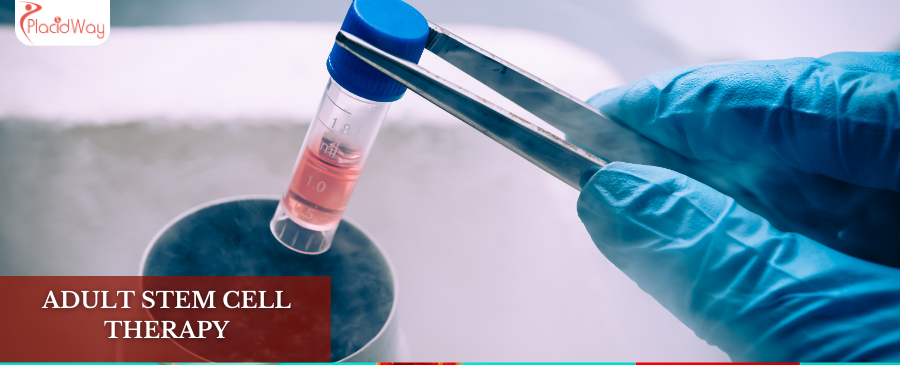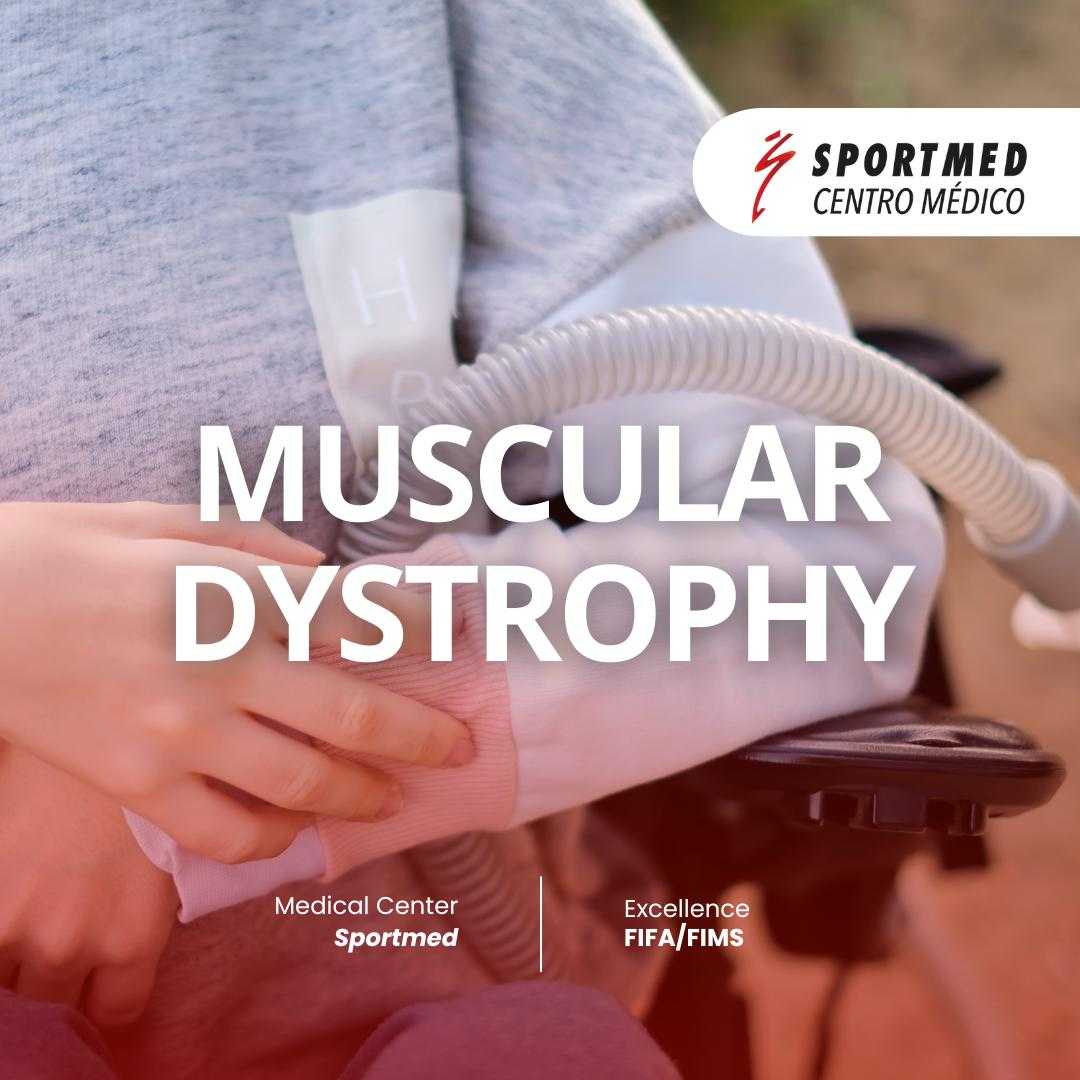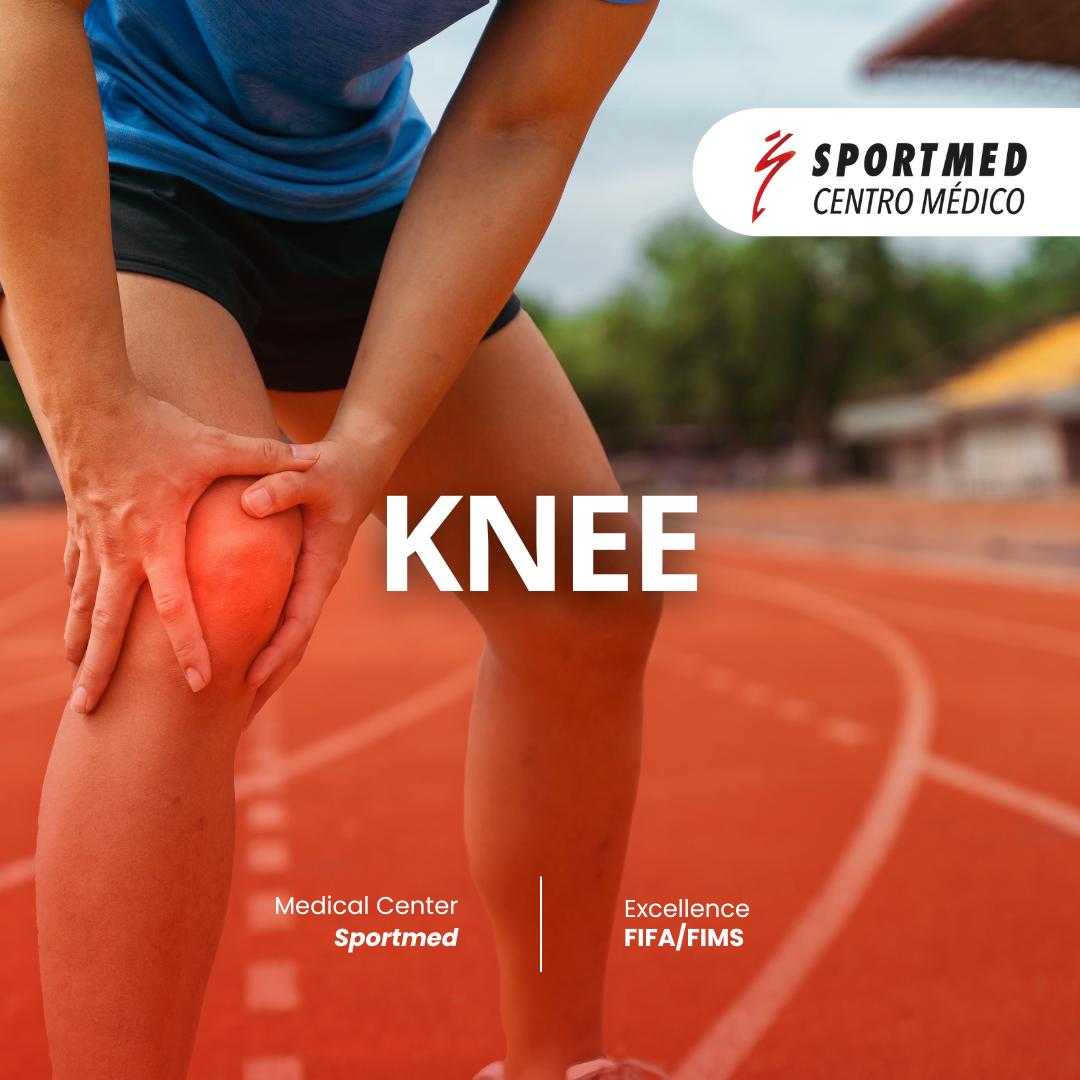
Unlock Your Body's Healing Potential: Adult Stem Cell Therapy Abroad
Are you experiencing chronic pain, limited mobility, or battling a degenerative disease that traditional treatments haven't fully addressed? You're not alone. Many individuals worldwide seek innovative solutions to improve their quality of life. One such groundbreaking approach is Adult Stem Cell Therapy, a procedure that taps into your body's inherent capacity for repair and regeneration.
Adult Stem Cell Therapy utilizes your body's own stem cells – or sometimes donor cells – to help heal damaged tissues, reduce inflammation, and alleviate symptoms of various conditions. Unlike embryonic stem cells, adult stem cells are readily available from sources like bone marrow or fat tissue, making them a well-researched and ethically less complex option. This therapy offers hope for conditions ranging from orthopedic injuries and autoimmune diseases to neurological disorders and heart conditions.
For many, the journey to wellness leads them beyond borders. Medical tourism for adult stem cell therapy has surged in popularity, driven by the desire for affordable, accessible, and often more advanced treatments not readily available or cost-prohibitive in their home countries. Countries renowned for medical innovation and quality healthcare offer cutting-edge stem cell procedures, often at a fraction of the cost, making life-changing treatment a tangible reality for more people. If you're exploring options to regenerate, repair, and regain your health, understanding adult stem cell therapy and its global availability is your first step towards a brighter future.
What Conditions Can Adult Stem Cell Therapy Treat?
Adult stem cell therapy holds promise for a diverse array of medical conditions, primarily focusing on those involving tissue damage, inflammation, or degeneration. Patients often consider this therapy when conventional treatments have failed or offer limited relief for symptoms such as persistent pain, loss of function, chronic fatigue, or neurological deficits.
Common conditions targeted by adult stem cell therapy include:
- Orthopedic Injuries and Degenerative Joint Disease: Osteoarthritis (knee, hip, shoulder), torn ligaments (ACL, MCL), tendonitis, rotator cuff injuries, and disc degeneration in the spine. Patients often experience severe joint pain, stiffness, and reduced mobility.
- Autoimmune Disorders: Multiple Sclerosis (MS), Rheumatoid Arthritis, Crohn's Disease, Lupus. Symptoms can include chronic inflammation, fatigue, pain, and systemic damage to organs.
- Neurological Conditions: Parkinson's Disease, Alzheimer's Disease (early stages), stroke recovery, spinal cord injuries. Patients may suffer from tremors, cognitive decline, paralysis, or impaired motor function.
- Cardiovascular Diseases: Congestive Heart Failure, post-myocardial infarction recovery. Symptoms include shortness of breath, fatigue, and chest pain due due to damaged heart muscle.
- Chronic Pain Syndromes: Neuropathic pain, chronic regional pain syndrome (CRPS). Patients experience debilitating, persistent pain that impacts daily life.
- Other Conditions: Diabetes (Type 1 and 2 in some research), Erectile Dysfunction, aesthetic applications (skin rejuvenation), and hair loss.
The goal is to leverage the stem cells' ability to modulate the immune system, reduce inflammation, and differentiate into specialized cells to repair or replace damaged tissue, thereby alleviating symptoms and improving organ function.
What Are the Causes and Risk Factors for Conditions Treatable by Stem Cells?
Understanding the underlying causes and risk factors for the conditions treatable by stem cells helps highlight why regenerative medicine is so vital. While stem cell therapy doesn't eliminate these root causes, it offers a way to mitigate their effects on the body.
For example:
- Degenerative Joint Disease (Osteoarthritis): Caused by wear and tear over time, often exacerbated by age, obesity, previous injuries, genetics, and repetitive stress. The cartilage in joints breaks down, leading to bone-on-bone friction, pain, and stiffness.
- Autoimmune Disorders (e.g., MS, RA): The immune system mistakenly attacks healthy body tissues. Causes are often a complex interplay of genetic susceptibility and environmental triggers (e.g., infections, toxins).
- Neurological Conditions (e.g., Parkinson's, Stroke): Parkinson's involves the loss of dopamine-producing neurons, often with genetic and environmental factors. Strokes are caused by interrupted blood flow to the brain, frequently linked to high blood pressure, diabetes, smoking, and heart disease.
- Heart Failure: Often a consequence of other heart conditions like coronary artery disease, high blood pressure, heart attacks, or valve problems. Risk factors include age, smoking, obesity, diabetes, and high cholesterol.
- Spinal Cord Injuries: Typically result from traumatic events like accidents, leading to damage of nerve cells and supporting tissues in the spinal cord.
In many of these cases, the body's natural regenerative capabilities are overwhelmed or insufficient to repair the extensive damage. This is where adult stem cell therapy intervenes, providing a concentrated dose of healing cells to support the body's efforts.
How Does Adult Stem Cell Therapy Work? Types and Procedures
Adult stem cell therapy is a medical procedure that involves using stem cells sourced from an adult, typically the patient themselves (autologous) or a healthy donor (allogeneic), to treat or prevent a disease or condition.
Here’s a breakdown of how it generally works and the common types:
Sources of Adult Stem Cells:
- Bone Marrow: Often rich in hematopoietic stem cells (which form blood cells) and mesenchymal stem cells (MSCs) (which can differentiate into bone, cartilage, fat, and muscle cells). Harvested from the hip bone.
- Adipose (Fat) Tissue: A readily available and rich source of MSCs. Fat is harvested via a mini-liposuction procedure.
- Peripheral Blood: Contains hematopoietic stem cells, often mobilized from the bone marrow into the bloodstream using medication.
- Umbilical Cord Blood/Tissue: While not "adult" stem cells from the patient, these are considered "adult-like" and are a rich, ethically sound source of MSCs and hematopoietic stem cells, often used in allogeneic treatments.
The Procedure Steps:
- Harvesting: Cells are collected from the patient's bone marrow or adipose tissue under local anesthesia. This is a relatively minor procedure.
- Processing: The harvested tissue is then processed in a specialized lab to concentrate the stem cells, often using centrifugation. For some procedures, the cells might be cultured to increase their numbers.
- Administration: The concentrated stem cells are then precisely administered into the target area. This can be via:
- Direct Injection: Into a joint (e.g., knee, shoulder), tendon, or muscle.
- Intravenous (IV) Infusion: For systemic conditions or to reach organs like the heart or brain.
- Surgical Implantation: For certain orthopedic or spinal conditions, cells might be delivered during surgery.
Once administered, these stem cells are believed to act in several ways: they can differentiate into cells needed for repair, release growth factors and cytokines that reduce inflammation and promote healing, and modulate the immune system to prevent further damage.
Am I a Candidate for Adult Stem Cell Therapy? Eligibility Criteria
Determining if you are a suitable candidate for adult stem cell therapy requires a comprehensive medical evaluation by a qualified specialist. This assessment typically involves:
- Diagnosis of a Treatable Condition: The most crucial factor is having a condition that research and clinical practice suggest can benefit from stem cell intervention. This includes degenerative joint diseases, certain autoimmune conditions, specific neurological disorders, and others.
- Overall Health Status: Patients should generally be in good health. Significant active infections, uncontrolled chronic diseases (like severe diabetes or cardiovascular disease), or certain blood disorders might contraindicate the procedure.
- Medical History Review: A detailed review of your medical history, including past surgeries, current medications, allergies, and any previous treatments for your condition, is essential.
- Absence of Active Cancer: Due to theoretical concerns about stem cells potentially fueling tumor growth (though highly debated for adult stem cells), active cancer is generally a contraindication.
- Realistic Expectations: Stem cell therapy is not a "miracle cure" but a regenerative treatment designed to improve symptoms and promote healing. Candidates should understand its potential benefits and limitations.
- Age and Lifestyle Factors: While there's no strict age limit, very elderly patients or those with severe comorbidities might have less favorable outcomes or increased risks during the harvesting procedure. Lifestyle factors like smoking or excessive alcohol consumption can also impact healing.
It's important to have an open discussion with your doctor about your specific case to determine if adult stem cell therapy is the right path for you.
What is the Recovery Time and What Can I Expect After Stem Cell Therapy?
The recovery experience after adult stem cell therapy is generally straightforward, but expectations should be managed regarding the onset of results. Unlike immediate relief from some conventional treatments, stem cell therapy is a regenerative process that unfolds over time.
Immediate Post-Procedure:
- Harvest Site Discomfort: If cells were harvested from bone marrow or fat, you might experience mild pain, bruising, or soreness at the collection site for a few days, similar to a deep bruise or minor liposuction.
- Injection Site Sensitivity: The area where stem cells were injected might be tender, swollen, or slightly bruised.
- Activity Restrictions: You'll likely be advised to avoid strenuous activities for a few days to a week to allow the cells to settle and begin their work. Light walking and gentle movements are usually encouraged.
Long-Term Expectations:
- Gradual Improvement: The regenerative process takes time. You might start noticing subtle improvements in pain, mobility, or other symptoms within 2-4 weeks, but significant improvements typically occur over 3-6 months, and in some cases, up to a year.
- Physical Therapy: For orthopedic conditions, physical therapy or rehabilitation exercises may be recommended to support the healing process and maximize functional gains.
- Follow-up: Your doctor will schedule follow-up appointments to monitor your progress and assess the effectiveness of the treatment.
- Individual Variability: Results can vary greatly among individuals based on the condition being treated, the severity of the condition, your body's healing capacity, and adherence to post-treatment instructions.
It’s crucial to understand that stem cell therapy is a biological process aimed at enhancing the body's natural healing, rather than an instant fix. Patience and adherence to post-procedure care are key to achieving the best possible outcomes.
What Are the Risks and Side Effects of Adult Stem Cell Therapy?
While adult stem cell therapy is generally considered safe, especially when using a patient's own cells (autologous), it is still a medical procedure and carries potential risks and side effects. It's essential to discuss these thoroughly with your healthcare provider.
Common and Minor Risks:
- Pain, Swelling, or Bruising: At the sites where cells are harvested (e.g., bone marrow, fat) or injected. This is usually temporary and manageable with over-the-counter pain relievers.
- Infection: Any invasive procedure carries a risk of infection, though sterile techniques are employed to minimize this.
- Bleeding: Minor bleeding at the harvest or injection site.
- Nerve Irritation/Damage: Though rare, there's a slight risk of irritation or damage to nearby nerves during the injection or harvesting process.
Less Common or Theoretical Risks:
- Allergic Reaction: Possible with components used during processing or if donor (allogeneic) cells are used, though rare with autologous cells.
- Cell Contamination: Although rare, there's a minimal risk of bacterial or other contamination during cell processing.
- Unintended Cell Growth (Tumor Formation): This is a significant concern with embryonic stem cells but is extremely rare and largely unsubstantiated for adult mesenchymal stem cells (MSCs) used in therapeutic settings, especially when not cultured extensively.
- Lack of Efficacy: The therapy might not produce the desired improvements for all patients or conditions.
- Immune Reaction/Rejection: Primarily a concern with allogeneic (donor) cells. Autologous cells significantly reduce this risk.
Choosing a reputable clinic with experienced doctors and strict adherence to safety protocols is paramount to minimizing these risks. Patients should always be transparent about their medical history and current medications to ensure the safest possible treatment.
Worldwide Cost Comparison: How Much Does Adult Stem Cell Therapy Cost?
The cost of adult stem cell therapy is a major factor for many patients, often driving them to seek treatment abroad. Prices can fluctuate wildly based on several variables:
- Type of Condition: Complex conditions requiring multiple injections or more intensive cell processing may cost more.
- Cell Source: Bone marrow aspirations might differ in cost from adipose tissue harvesting.
- Number of Treatments: Some protocols involve single treatments, while others require a series of injections.
- Clinic Reputation and Technology: Highly specialized clinics with state-of-the-art labs and renowned doctors may have higher fees.
- Location: Geographical location is one of the biggest determinants of cost.
Estimated Cost Comparison Table (for a single joint or moderate condition):
| Country/Region | Estimated Cost Range (USD) | Key Factors for Cost |
|---|---|---|
| USA / Canada | $10,000 - $50,000+ | High operating costs, advanced technology, extensive regulatory compliance. |
| Western Europe (e.g., Germany, Switzerland) | $8,000 - $35,000 | High quality, strong regulations, but generally lower than North America. |
| Mexico / Panama / Costa Rica | $5,000 - $15,000 | Significant cost savings, reputable clinics catering to international patients, less stringent regulations often allow for more advanced treatments. |
| Asia (e.g., South Korea, Thailand, India) | $7,000 - $25,000 | Advanced medical infrastructure, highly skilled doctors, competitive pricing, often includes comprehensive medical tourism packages. |
These figures are estimates and can vary. It's crucial to get a personalized quote from any clinic you consider. The significantly lower costs in medical tourism destinations often do not reflect a compromise in quality but rather lower operational expenses and different healthcare economic structures.
Why Consider Adult Stem Cell Therapy Abroad?
The decision to seek medical treatment abroad, especially for an innovative procedure like adult stem cell therapy, is driven by several compelling factors:
- Cost Savings: This is often the primary motivator. The same high-quality procedure can be significantly more affordable in countries like Mexico, Panama, or South Korea compared to the US or Western Europe, even after factoring in travel and accommodation.
- Access to Advanced Treatments: Some countries have more progressive regulatory environments that allow for the use of certain stem cell therapies or protocols that might still be in clinical trial phases or are not yet approved in a patient's home country. This offers access to cutting-edge options.
- Reduced Wait Times: In many public healthcare systems, patients face long waiting lists for specialized treatments. Traveling abroad can provide immediate access to care, which can be crucial for progressive conditions.
- High-Quality Care and Facilities: Many medical tourism hubs boast world-class hospitals and clinics equipped with state-of-the-art technology and staffed by highly trained, internationally certified medical professionals. They are often accredited by international bodies like JCI.
- Privacy and Anonymity: For some, receiving treatment away from their home country offers a greater sense of privacy and anonymity, allowing them to focus solely on their recovery.
- Combining Treatment with Travel: The opportunity to recover in a beautiful, relaxing environment, or even combine treatment with a vacation, can be an added appeal.
Ultimately, seeking treatment abroad can offer a holistic solution that balances quality, cost, and timely access to potentially life-changing therapy.
Which Countries Offer the Best Value and Quality for Stem Cell Therapy?
Several countries have emerged as global leaders in medical tourism for adult stem cell therapy, striking a balance between affordability, quality, and accessibility:
- Mexico: A top destination, especially for North American patients, due to its proximity, competitive pricing, and a growing number of reputable clinics. Cities like Tijuana and Cancun offer modern facilities and experienced doctors. Mexico often provides access to a broader range of therapies due to different regulatory frameworks.
- Panama: Known for its progressive stem cell research and well-established clinics, Panama has become a hub for patients seeking therapies for various conditions, including autoimmune and neurological disorders. It boasts advanced facilities and specialists.
- Germany: While generally more expensive than Latin American options, Germany is highly respected for its strict regulatory standards, advanced medical research, and high-quality healthcare system. It's often preferred by patients seeking treatments within a highly regulated European framework.
- South Korea: A global leader in stem cell research and clinical application, South Korea offers highly advanced technology, cutting-edge treatments, and world-class hospitals, often at more competitive prices than the US or Western Europe, especially for more complex conditions.
- Thailand and India: Emerging markets offering high-quality medical care at significantly lower costs, particularly attractive to patients from Asia, the Middle East, and Europe. They feature modern hospitals and skilled physicians.
When choosing a country, consider not just the cost but also the clinic's reputation, doctor's credentials, available therapies, regulatory environment, and patient reviews.
What to Expect When Traveling for Adult Stem Cell Therapy?
Embarking on a medical journey abroad requires careful planning and clear expectations. Here’s a general roadmap of what you can anticipate:
- Initial Consultation & Planning:
- Research and Selection: Identify reputable clinics and doctors in your chosen destination.
- Remote Consultation: Most clinics offer virtual consultations to review your medical history, discuss your condition, assess eligibility, and provide a personalized treatment plan and cost estimate.
- Travel Logistics: Book flights, accommodation, and transportation from the airport to the clinic/hotel. Many medical tourism agencies (like PlacidWay) can assist with these arrangements.
- Documentation: Ensure your passport is valid, and check visa requirements for your destination country. Gather all relevant medical records for the clinic.
- Arrival and Pre-Treatment:
- Arrival: You'll arrive in the destination city, often met by clinic staff or a pre-arranged transfer.
- In-Person Evaluation: A detailed physical examination, further diagnostics (blood tests, imaging), and a final consultation with your doctor will occur to confirm the treatment plan.
- The Procedure:
- The stem cell harvesting and injection will take place, typically lasting a few hours.
- You'll receive post-procedure instructions and care.
- Recovery and Departure:
- Short Stay for Monitoring: Depending on the procedure, you might stay in the clinic for a few hours or a day, or simply rest at your hotel.
- Follow-up & Instructions: You'll have a follow-up appointment before leaving, receiving detailed instructions for post-treatment care and rehabilitation.
- Return Home: You can typically fly home within a few days to a week, depending on your recovery and the specific treatment.
Communication with your clinic throughout the process is key to a smooth and successful experience. Don't hesitate to ask questions at any stage.
How to Ensure Safety and Quality of Stem Cell Therapy Abroad?
Ensuring the safety and quality of stem cell therapy when traveling abroad is paramount. While many international clinics offer excellent care, vigilance is essential. Here's how to safeguard your experience:
- Verify Accreditations: Look for clinics accredited by international organizations like the Joint Commission International (JCI). This signifies adherence to global standards of patient safety and quality of care. Local accreditations are also important.
- Doctor's Credentials and Experience: Research the treating physician(s). Ensure they are board-certified in their specialty, have extensive experience in stem cell therapy, and are recognized by relevant medical associations. Don't hesitate to ask for their CV and case studies.
- Regulatory Compliance: Inquire about the country's regulations regarding stem cell therapy and ensure the clinic operates within these guidelines. Understand their specific protocols for cell harvesting, processing, and administration. A legitimate clinic will be transparent about their practices.
- Clinic Facilities and Technology: Confirm that the clinic utilizes modern, sterile facilities, including a state-of-the-art laboratory for cell processing. Ask about quality control measures in place.
- Transparent Communication: The clinic should provide clear, detailed information about the treatment plan, expected outcomes, potential risks, and all associated costs upfront. Ensure there are no hidden fees. Language barriers should be addressed with professional interpreters if needed.
- Patient Testimonials and Reviews: While individual results vary, reading authentic patient reviews and success stories can offer insights into the clinic's reputation and patient satisfaction.
- Ethical Standards: Ensure the clinic adheres to high ethical standards, particularly concerning the source and handling of stem cells.
Working with a reputable medical tourism facilitator like PlacidWay can also add an extra layer of vetting and support, helping you connect with trusted providers.
What are Patient Success Stories and Testimonials from Abroad?
While individual results with stem cell therapy can vary widely, many patients who have traveled abroad for treatment share inspiring stories of improved health and renewed hope. These testimonials often highlight the life-changing impact of receiving advanced care.
Common themes in patient success stories include:
- Significant Pain Reduction: Patients suffering from chronic joint pain (e.g., knee osteoarthritis) often report a dramatic decrease in pain levels, allowing them to reduce reliance on pain medication and resume activities they once enjoyed.
- Improved Mobility and Function: Individuals with limited range of motion due to injuries or degenerative conditions frequently experience enhanced flexibility, strength, and overall physical function, enabling them to walk further, climb stairs more easily, or participate in hobbies again.
- Relief from Autoimmune Symptoms: For conditions like Multiple Sclerosis or Rheumatoid Arthritis, patients might describe reduced inflammation, fewer flare-ups, decreased fatigue, and a general stabilization or slowing of disease progression.
- Neurological Gains: Stroke survivors or those with early-stage neurological conditions sometimes report improvements in motor skills, speech, or cognitive function, contributing to greater independence.
- Enhanced Quality of Life: Beyond specific symptom relief, many patients express an overall improvement in their well-being, mood, and ability to engage with life more fully, underscoring the profound impact of regaining health.
These stories, often shared on forums, clinic websites, or through medical tourism facilitators, serve as powerful testaments to the potential of adult stem cell therapy and the accessibility offered by international medical care. They provide encouragement and practical insights for others considering this path.
Take the Next Step with PlacidWay
Ready to explore treatment options abroad? Discover top clinics, compare prices, and get a free quote tailored to your needs with PlacidWay.
Stem Cell Therapy Abroad










Share this listing